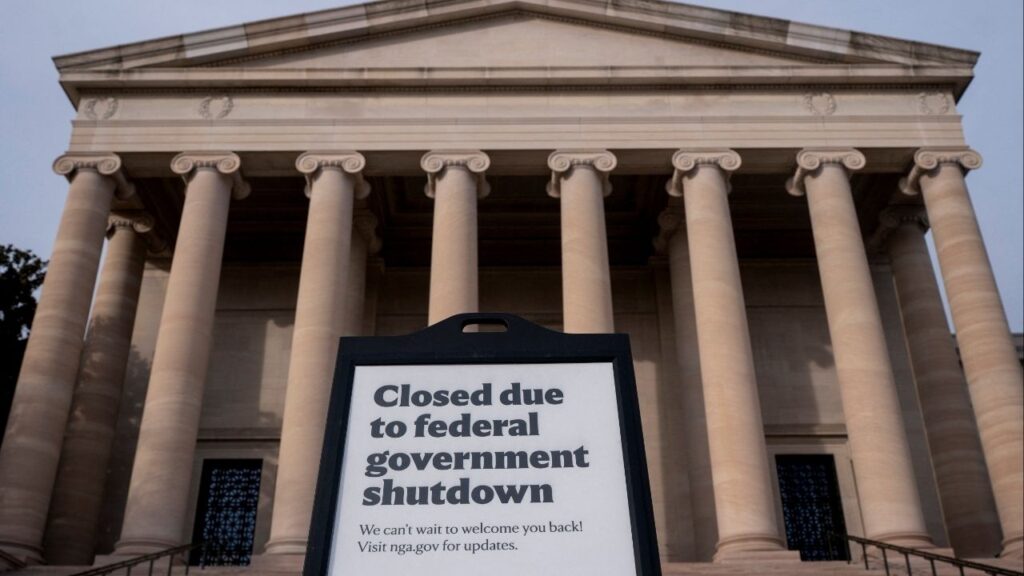Share
![]()
■Eclipse chasers from Fresno are traveling to Texas for the April 8 solar eclipse so they can be in the path of totality — where the moon completely blocks the sun’s direct rays.
■Because of the moon’s shorter distance to earth on April 8, the time of totality will be more than twice as long in Texas as it was in the western U.S. for the 2017 total eclipse.
■The next total eclipse in the U.S. won’t come for another 20 years.
Why would someone travel more than 1,500 miles to watch something that only lasts 4½ minutes — and is visible only if it’s a cloudless day?
That question can be answered by a handful of Fresnans who are eagerly planning to travel to central Texas to view the April 8 total solar eclipse.
If you’ve never seen a total solar eclipse, consider this description from Fresno State physics professor Frederick A. Ringwald, who saw the total eclipse in Oregon in 2017, another in Germany in 1999, and will be traveling to Texas for next month’s celestial event:
“The reason why eclipse chasers know their dates and locations of their eclipses so precisely is that it isn’t for nothing that they call a total solar eclipse ‘nature’s most awe-inspiring phenomenon.’ Your life literally changes. You can feel the earth move beneath your feet.”
Eclipse chasers are heading to the path of totality where the moon will completely blot out the sun, casting twilight across the landscape and giving watchers the only opportunity to stare at the sun with their naked eye without risking blindness.
The path of totality will sweep over Texas, Oklahoma, Arkansas, Missouri, Illinois, a corner of Kentucky, Indiana, Ohio, Pennsylvania, New York, Vermont, New Hampshire, and Maine.
Outside the path of totality, the eclipse will be only partial. NASA says that residents in all 48 contiguous states plus parts of Alaska and Hawaii will be able to see at least a portion of the eclipse.
Steve Britton, a member of the Central Valley Astronomers, estimates that about 41% of the sun will be eclipsed here. On April 8, Britton, a retired Fresno Unified teacher, plans to head to Kingsburg High to help students set up equipment to safely view the partial eclipse.
The real action for eclipse chasers from Fresno and other parts of the West will be in the hill country of central Texas, where millions are expected to converge in what promoters have been billing “The Great American Eclipse.”
Texas Total Eclipse Will Be Longer
Why are so many so keen to travel to be inside the path of totality next month? For starters, total solar eclipses aren’t exactly common — the next one crossing the U.S. won’t arrive until 2044.
California won’t experience another total eclipse until 2045, and you’ll need to travel to the top part of the state to see it. (For people who like to plan well in advance, the path of totality will enter around Cape Mendocino and move through Redding before heading eastward into northern Nevada.)
Texas also will have a longer duration eclipse than other parts of the U.S. This flyover animation from the greatamericaneclipse.com website simulates what the eclipse will look like from the view of a spacecraft 125 miles high chasing the moon’s shadow, which will enter the U.S. traveling at more than 1,600 mph and will speed up to more than 3,100 mph by the time it leaves Maine. As the shadow accelerates, the time of totality will shrink for observers further east in the U.S.
Also, because the moon’s elliptical orbit will bring it closer to earth during the eclipse, the path of totality will be wider in April than it was for the 2017 eclipse.
Given the time of year — early spring — prognosticators have forecast that climatologically speaking the best location to see the eclipse will be in Texas rather than the Midwest or Northeast.
If they are fortunate enough to have clear skies, those in the path of totality will see the moon’s shadow approaching and then departing.
“You can sense the motion of the earth, as (Queen lead guitarist and astrophysicist) Brian May observed.
It’s alive,” says Ringwald. “Your first total solar eclipse is a life-changing experience. For the first time, you clearly sense the reality that you are on a little rock hurtling around the sun.”
The April eclipse will be the third for Ringwald, a physics professor who does astronomy research at Fresno State. He has an affinity for rock-and-roll icons — in addition to quoting Brian May, Ringwald named the cameras that he used to shoot the Aug. 21, 2017, total solar eclipse in Metolius, Oregon, as John, Paul, George, Ringo, Jimi, and Janis.
Many of the images that he captured are posted on his website.
This time-lapse photo, which Ringwald shot with the “George” camera, shows the stages leading and following the total eclipse.

This composition that Ringwald shot with the “Jimi” camera looks like a black and white image of the sun’s corona during totality, but bright red prominences can be seen on the sun’s right edge. (This is the image at the top of this story.)
Ground Zero: Fredericksburg
April’s total solar eclipse will be No. 3 for Brian Bellis, vice president of the Central Valley Astronomers and a retired physics teacher who worked for two decades at Hoover High School, where he was also adviser to the Astronomy Club.
Bellis is traveling to Texas with a neighbor whose brother lives in San Antonio. Westsiders in San Antonio will get a couple of minutes of totality, while their eastside neighbors can expect only a partial eclipse.
But Bellis plans to leave San Antonio on the morning of the eclipse and head with his telescope and his neighbor to Fredericksburg, a small Texas city known for its German heritage and its wineries that’s dead-center on the path of totality and that will get nearly 4½ minutes of total eclipse time.
That’s more than double the amount of total eclipse that Bellis witnessed in Madras, Oregon in 2017.
Traveling so far from home for just two to four minutes of black-out?
Totally worth it, Bellis says.
Having two total eclipses cross North America in just seven years, both of which were within driving distance of Fresno, were reason enough to make the trips, he says. His earliest total eclipse was in Mexico, where he discovered that when the sun is covered by the moon, mosquitos think it’s nighttime and come out to feed.
He’s bringing repellant with him to Texas, just in case.
Bellis says he had considered visiting a brother who lives in Buffalo, New York, who will be in the path of totality, but there “the weather is just so iffy.”
Like many people, his research revealed that Texas will have the best chance of clear skies on April 8.
And he was particularly eager to see next month’s total solar eclipse because after that none will hit the U.S. for another 20 years.
“If I want to see any more after the Texas eclipse, I’m probably going to have to do some world traveling,” Bellis says. “I don’t know about you, but this might very well be my last (total) eclipse. Although I still enjoy partial eclipses, because I have equipment to look through, solar filters on my telescope. Telescopes, plural.”

Family Reunion
Also heading to Texas is Dan Comelli, who will be traveling with his wife Mary to Pflugerville, a city on the outskirts of Austin where their niece lives and where more than 25 family members will gather for an eclipse-themed reunion. The family even had a contest to create a T-shirt design as a memento of the occasion, he says.
It will be the Comellis’ second total eclipse — they met up with several family members in a tiny town in eastern Idaho for the August 2017 eclipse. Comelli, a retired physician who worked at Fresno State, isn’t as much a diehard eclipse chaser as some of his relatives, but seeing a total eclipse was something he always wanted to experience.
He discovered that booking accommodations far in advance is essential.
They began planning their trip two to three years out. By the time they looked for a hotel or motel a full year before August 2017, they found that their options already were limited. They did find a motel in Rigby, a small town northeast of Idaho Falls in the path of totality.
Seeing an eclipse was kind of a bucket list item for him. “I had read about it and kind of watched videos about it, but I was really looking forward to experiencing it personally, what does it feel like to have things just, all of a sudden daylight goes to dark, and come back,” Comelli says.
The location in Idaho was chosen by a brother-in-law with experience in weather forecasting and a shared interest in eclipses.
Comelli says he was surprised to wake up on Aug. 21 and discover the parking lot and roads were packed with cars, telescopes, cameras, and people.
“I had just expected, you know, you’d be out there, all alone, kind of experiencing it,” he says. “No, it was not like that for us. I wish we would have just driven away from town and up into the hills.”
Eclipses Are Scientific as Well as Beautiful
Fredericksburg also will be the destination for Ringwald and his girlfriend, who are traveling on a tour organized by Sky and Telescope magazine that will take them first to Austin, and then to Fredericksburg on the morning of the eclipse.
Ringwald, who first caught the eclipse-chasing bug from a college roommate, has a perspective as a physicist that goes beyond the “ooh-ahhh” factor for many eclipse watchers.
For instance, because the sun is approaching the solar maximum — the period of the greatest activity during the sun’s 11-year cycle — Ringwald expects the corona will look a lot different, more tangled and wild, than during the 2017 eclipse.
Why should we care about what happens on the sun? Because storms on the sun and solar flares can interfere with satellites in space above us powering our telecommunications and power lines here on earth, he says.
Eclipses provide opportunities for new scientific discoveries. Observations during eclipses in the 1700s and 1800s determined that the corona belonged to the sun, not the moon, and that its shape changes due to sunspots.
Ringwald says one of the more notable discoveries out of an eclipse came in 1919 when scientists observed gravitational lensing, when massive bodies cause light to bend, which was a key prediction of Albert Einstein’s general theory of relativity.

Unanswered Questions
There remain many mysteries yet to be solved, Ringwald says, such as: Why haven’t we yet seen asteroids in the area between Mercury and the sun, the only place in the solar system where they are predicted to exist but appear to be absent? At one point scientists had predicted the existence of another planet to explain Mercury’s oddly shaped orbit. They named the planet Vulcan, after the Roman god of fire.
“Which, of course, in Star Trek came to be known as the home of Mr. Spock,” says Ringwald, who sprinkles pop cultural references in his conversations. “But Vulcan was thought to be a planet closer to the sun than Mercury.
“So an observation that people are trying to make, and I wish they would make, would be the discovery of asteroids always closer to the sun than Mercury, which are called vulcanoids. And, why is this important? Because it’s the only gravitational region of the solar system where asteroids are predicted to exist but have not yet been found. So if there are no vulcanoids, there must be a darn good reason for it. Something happening in the distant past in the sun. Or maybe discovery of a fifth law of nature. We don’t really know. The point is, the distribution of asteroids around the solar system tells you rather a lot about the history of the solar system. And so the discovery of vulcanoids would tell us a lot about the history of the inner solar system, and not finding any would be a real surprise.”
Another question: Why is the sun’s corona 200 times hotter than the surface of the sun? “When you walk away from a campfire, you expect the air around you to get cooler, not hotter,” Ringwald says. “So there must be something else that’s heating it. Since 1948, people have been mumbling ‘magnetism’ since that’s essentially the only thing that they can come up with.”
For those of us not engaged in scientific exploration, total solar eclipses are that rare time when warring armies will lay down their arms, as they did in 585 BC in what is now present-day Turkey, or when indigenous people bang drums, break pottery, and make other noise to scare off what appeared to be a dragon devouring the sun, Ringwald says. “And the sun will go back to normal within a few minutes. Works every time.”
Once an eclipse begins the air temperature can drop by as much as 15 degrees Fahrenheit. Ringwald says he saw a horned owl, typically nocturnal, swoop over his location in Metolius during the 2017 eclipse. “Day turns into night for a few minutes. People scream, dogs howl, birds come out and sing afterwards because apparently they think it’s morning,” he says.
The awesomeness of being in the moon’s shadow for more than four minutes is an experience that few — if any — will forget.
“It’s just an esthetic thrill that makes scientific observations difficult. You can’t help but look up and look around you,” Ringwald says. “As no less than Mariah Mitchell, the only woman astronomer, the only woman professional scholar in the United States in 1850, observed, ‘We especially need imagination in science. It is not all mathematics nor all logic, but is somewhat beauty and poetry.’
“So, that is the real value of a total solar eclipse.”
August 2017 Eclipse Video from Metolius, Oregon
RELATED TOPICS:
Categories

Venmo Down for Thousands of Users, Downdetector Reports


















